|
|
U.S. States Light Pollution Maps
Signatures Collected as of
07/06/2025
:
86
READ THE
LETTER AND SIGN THE PETITION
Click on a map to view larger size

|
|
Alabama
Capital City:
Montgomery
Location: 32.354N, 86.284W
|
|
|
|
|
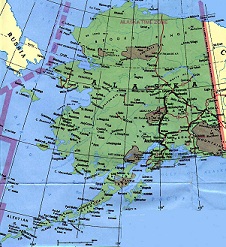
|
|
Alaska (Looking for this map)
Capital City:
Juneau
Location: 58.388N, 134.133W
|
|
|
|
|

|
|
Arizona
Capital City:
Phoenix
Location: 33.542N, 112.071W
|
|
|
|
|

|
|
Arkansas
Capital City:
Little Rock
Location: 34.722N, 92.354W
|
|
|
|
|

|
|
California
Capital City:
Sacramento
Location: 38.546N, 121.426W
|
|
|
|
|

|
|
Colorado
Capital City:
Denver
Location: 39.768N, 104.872W
|
|
|
|
|

|
|
Connecticut
Capital City:
Hartford
Location: 41.765N, 72.683W
|
|
|
|
|

|
|
Delaware
Capital City:
Dover
Location: 39.158N, 75.517W
|
|
|
|
|
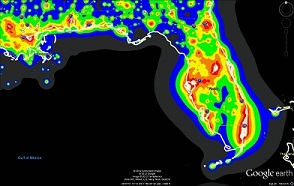
|
|
Florida
Capital City:
Tallahassee
Location: 30.457N, 84.281W
|
|
|
|
|

|
|
Georgia
Capital City:
Atlanta
Location: 33.762N, 84.422W
|
|
|
|
|

|
|
Hawaii (Looking for this map)
Capital City:
Honolulu
Location: 21.318N, -157.922W
|
|
|
|
|

|
|
Idaho
Capital City:
Boise
Location: 43.606N, 116.226W
|
|
|
|
|

|
|
Illinois
Capital City:
Springfield
Location: 39.781N, 89.644W
|
|
|
|
|

|
|
Indiana
Capital City:
Indianapolis
Location: 39.776N, 86.146W
|
|
|
|
|

|
|
Iowa
Capital City:
Des Moines
Location: 41.576N, 93.617W
|
|
|
|
|

|
|
Kansas
Capital City:
Topeka
Location: 39.037N, 95.691W
|
|
|
|
|

|
|
Kentucky
Capital City: Frankfort
Location: 38.190N, 84.865W
|
|
|
|
|

|
|
Louisiana
Capital City:
Baton Rouge
Location: 30.448N, 91.126W
|
|
|
|
|

|
|
Maine
Capital City:
Augusta
Location: 44.330N, 69.729W
|
|
|
|
|

|
|
Maryland
Capital City:
Annapolis
Location: 38.971N, 76.503W
|
|
|
|
|

|
|
Massachusetts
Capital City:
Boston
Location: 42.336N, 71.017W
|
|
|
|
|

|
|
Michigan
Capital City:
Lansing
Location: 42.709N, 84.553W
|
|
|
|
|

|
|
Minnesota
Capital City:
Saint Paul
Location: 44.839N, 92.994W
|
|
|
|
|

|
|
Mississippi
Capital City: Jackson
Location: 32.320N, 90.207W
|
|
|
|
|

|
|
Missouri
Capital City:
Jefferson City
Location: 38.571N, 92.190W
|
|
|
|
|
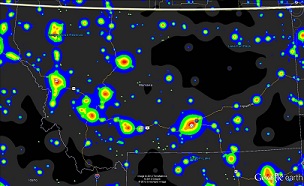
|
|
Montana
Capital City:
Helena
Location:
46.596N, 112.020W
|
|
|
|
|

|
|
Nebraska
Capital City:
Lincoln
Location: 40.816N, 96.688W
|
|
|
|
|

|
|
Nevada
Capital City: Carson City
Location: 39.148N, 119.743W
|
|
|
|
|

|
|
New Hampshire
Capital City:
Concord
Location: 43.231N, 71.560W
|
|
|
|
|

|
|
New Jersey
Capital City:
Trenton
Location: 40.223N, 74.764W
|
|
|
|
|
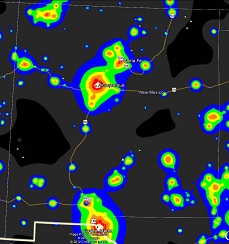
|
|
New Mexico
Capital City:
Santa Fe
Location: 35.678N, 105.954W
|
|
|
|
|

|
|
New York
Capital City:
Albany
Location: 42.665N, 73.799W
|
|
|
|
|
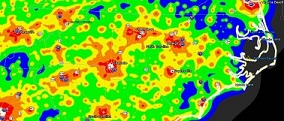
|
|
North Carolina
Capital City:
Raleigh
Location: 35.821N, 78.658W
|
|
|
|
|

|
|
North Dakota
Capital City:
Bismarck
Location: 46.805N, 100.767W
|
|
|
|
|
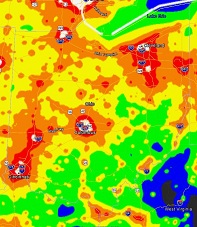
|
|
Ohio
Capital City:
Columbus
Location: 39.988N, 82.987W
|
|
|
|
|

|
|
Oklahoma
Capital City:
Oklahoma City
Location: 35.467N, 97.513W
|
|
|
|
|

|
|
Oregon
Capital City:
Salem
Location: 44.924N, 123.022W
|
|
|
|
|

|
|
Pennsylvania
Capital City:
Harrisburg
Location: 40.276N, 76.884W
|
|
|
|
|

|
|
Rhode Island
Capital City:
Providence
Location: 41.821N, 71.419W
|
|
|
|
|

|
|
South Carolina
Capital City:
Columbia
Location: 34.039N, 80.886W
|
|
|
|
|

|
|
South Dakota
Capital City:
Pierre
Location: 44.372N, 100.322W
|
|
|
|
|

|
|
Tennessee
Capital City:
Nashville
Location: 36.171N, 86.784W
|
|
|
|
|

|
|
Texas
Capital City: Austin
Location: 30.305N, 97.750W
|
|
|
|
|

|
|
Utah
Capital City:
Salt Lake City
Location: 40.777N, 111.929W
|
|
|
|
|

|
|
Vermont
Capital City:
Montpelier
Location: 44.266N, 72.571W
|
|
|
|
|

|
|
Virginia
Capital City:
Richmond
Location: 37.531N, 77.474W
|
|
|
|
|

|
|
Washington
Capital City:
Olympia
Location: 47.041N, 122.893W
|
|
|
|
|

|
|
West Virginia
Capital City:
Charleston
Location: 38.350N, 81.630W
|
|
|
|
|

|
|
Wisconsin
Capital City:
Madison
Location: 43.044N, 89.409W
|
|
|
|
|

|
|
Wyoming
Capital City: Cheyenne
Location:
41.145N, 104.792W
|
SIGN THE PETITION
Class 1: Excellent Dark-Sky Site - Black
The zodiacal light, gegenschein, and zodiacal band (S &T: October 2000, page 116) are all visible -
the zodiacal light to a striking degree, and the zodiacal band spanning the entire sky. Even with direct
vision, the galaxy M33 is an obvious naked-eye object. The Scorpius and
Sagittarius region of the Milky Way casts obvious diffuse shadows on the ground.
To the unaided eye the limiting magnitude is 7.6 to 8.0 (with effort); the
presence of Jupiter or Venus in the sky seems to degrade dark adaptation.
Airglow (a very faint, naturally occurring glow most evident within about 15
degrees of the horizon) is readily apparent. With a 32-centimeter (12½) scope,
stars to magnitude 17.5 can be detected with effort, while a 50-cm (20-inch)
instrument used with moderate magnification will reach 19th magnitude. If you
are observing on a grass-covered field bordered by trees, your telescope,
companions, and vehicle are almost totally invisible. This is an observer's
Nirvana!
Class 2: Typical
Truly Dark Site - Gray
Airglow may be weakly apparent along the horizon.
M33 is rather easily seen with direct vision. The summer Milky Way is highly
structured to the unaided eye, and its brightest parts look like veined marble
when viewed with ordinary binoculars. The zodiacal light is still bright enough
to cast weak shadows just before dawn and after dusk, and its color can be seen
as distinctly yellowish when compared with the blue-white of the Milky Way. Any
clouds in the sky are visible only as dark holes or voids in the starry
background. You can see your telescope and surroundings only vaguely, except
where they project against the sky. Many of the Messier globular clusters are
distinct naked-eye objects. The limiting naked-eye magnitude is as faint as 7.1
to 7.5, while a 32-cm telescope reaches to magnitude 16 or 17.
Class 3: Rural
Sky - Blue
Some indication of light pollution is evident
along the horizon. Clouds may appear faintly illuminated in the brightest parts
of the sky near the horizon but are dark overhead. The Milky Way still appears
complex, and globular clusters such as M4, M5, M15, and M22 are all distinct
naked-eye objects. M33 is easy to see with averted vision. The zodiacal light is
striking in spring and autumn (when it extends 60 degrees above the horizon
after dusk and before dawn) and its color is at least weakly indicated. Your
telescope is vaguely apparent at a distance of 20 or 30 feet. The naked-eye
limiting magnitude is 6.6 to 7.0, and a 32-cm reflector will reach to 16th
magnitude. Long exposure astrophotos might show some light pollution gradient,
but visual observing is relatively unimpaired.
Class 4/4.5:Rural/Suburban
Transition
Fairly obvious light-pollution domes
are apparent over population centers in several directions. The zodiacal light
is clearly evident but doesn't even extend halfway to the zenith at the
beginning or end of twilight. The Milky Way well above the horizon is still
impressive but lacks all but the most obvious structure. M33 is a difficult
averted-vision object and is detectable only when at an altitude higher than 50
degrees. Clouds in the direction of light-pollution sources are illuminated but
only slightly so, and are still dark overhead. You can make out your telescope
rather clearly at a distance. The maximum naked-eye limiting magnitude is 6.1 to
6.5, and a 32-cm reflector used with moderate magnification will reveal stars of
magnitude 15.5. Modest to serious impact to deep sky observing and imaging.
Class 5: Suburban
Sky
Only hints of the zodiacal light are seen on the
best spring and autumn nights. The Milky Way is very weak or invisible near the
horizon and looks rather washed out overhead. Light sources are evident in most
if not all directions. Over most or all of the sky, clouds are quite noticeably
brighter than the sky itself. The naked-eye limit is around 5.6 to 6.0, and a
32-cm reflector will reach about magnitude 14.5 to 15.
Class 6: Bright
Suburban Sky
No trace of the zodiacal light can be seen, even
on the best nights. Any indications of the Milky Way are apparent only toward
the zenith. The sky within 35 degrees of the horizon glows grayish white. Clouds
anywhere in the sky appear fairly bright. You have no trouble seeing eyepieces
and telescope accessories on an observing table. M33 is impossible to see
without binoculars, and M31 is only modestly apparent to the unaided eye. The
naked-eye limit is about 5.5, and a 32-cm telescope used at moderate powers will
show stars at magnitude 14.0 to 14.5.
Class 7: Suburban/Urban
Transition
The entire sky background has a vague, grayish
white hue. Strong light sources are evident in all directions. The Milky Way is
totally invisible or nearly so. M44 or M31 may be glimpsed with the unaided eye
but are very indistinct. Clouds are brilliantly lit. Even in moderate-size
telescopes, the brightest Messier objects are pale ghosts of their true selves.
The naked-eye limiting magnitude is 5.0 if you really try, and a 32-cm reflector
will barely reach 14th magnitude. Less than 100 stars visible over 30 degrees
elevation.
Class 8: City
Sky - White
The sky glows whitish gray or orangish, and
you can read newspaper headlines without difficulty. M31 and M44 may be barely
glimpsed by an experienced observer on good nights, and only the bright Messier
objects are detectable with a modest-size telescope. Some of the stars making up
the familiar constellation patterns are difficult to see or are absent entirely.
The naked eye can pick out stars down to magnitude 4.5 at best, if you know just
where to look, and the stellar limit for a 32-cm reflector is little better than
magnitude 13.
Class 9: Inner-City
Sky - White
The entire sky is brightly lit, even at the
zenith. Many stars making up familiar constellation figures are invisible, and
dim constellations such as Cancer and Pisces are not seen at all. Aside from
perhaps the Pleiades, no Messier objects are visible to the unaided eye. The
only celestial objects that really provide pleasing telescopic views are the
Moon, the planets, and a few of the brightest star clusters (if you can find
them). The naked-eye limiting magnitude is 4.0 or less. Less than 20 stars
visible over 30 degrees elevation.
This text is from
Sky and Telescope
magazines website
SIGN THE PETITION
|
|